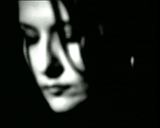
 Author of all texts
about mythology on
these web-pages is
Lidija Bajuk:
Author of all texts
about mythology on
these web-pages is
Lidija Bajuk:
|
lidija.bajuk@posluh.hr
scena.hgu.hr/lidija-bajuk/
- The Sky
- The Mountain
2. PERUNIKA
- Leluya
- Ball lightning
3. AQUARIUS
- Candlemen
WATER MAID
- Fairies
- Witches
4. DRAGON
- Water
SNAKE
- Bogorodica
(Rainbow)
5. GREEN GEORGE
- The Moon
- Corn Spirit
6. LEPA MARA
- Hair
- Embroidery
7. GRABANCIJAŠ
- Light
8. PESJANEK
- Forest
9. LITTLE RED HAT
(DWARF)
- The Cap, Little Hat
10. STRAHE & MRAKI
(GIANTS)
|
LEPA MARA
(BEAUTIFUL MARA)
|
|
They make gods, good and evil spirits quarrel. Perunika makes Perun and Veles quarrel over her, Lepa Mara makes her divine brothers quarrel over her. She promises that she will jump off a silver bridge (during daytime it is the rainbow and in the night it is Kumovska Slama (the Milky Way)) with one of them as his bride and thus run away from the other one who wants her as his mistress. By jumping into the water of forgetfulness, she will cross the border between the day and night, between the new and old year, between heaven and hell, enter the sea of night, disappear and thus keep her chastity. If she doesn't marry one of the night gods, one of them will catch her and force her to marry and have a child with him, but eventually she will escape him. In any case, he will have his revenge by blinding, strangling, petrifying or burning her. These cruel acts represent the principles of the night or winter time. She comes to life again on the passionate love flame of her lover (who is sometimes her former torturer) and gives her life flame to the moon, who is in love with her, to keep it for her. When the servants of the divine finally find her and with the help of her father Perun, or a handsome stranger (Green Goerge) free her of her chains, she marries Green George on a white whinged horse and gives him her life flame, a golden apple from the Paradise tree and her necklace, the first morning or spring light. In return he gives her a gold ring and marries her on midsummer day. Even though they come from the same divine stem and they are siblings, they devote themselves to enchantment and love and thus make all living creatures grow and bear fruit. Their wedding night should be on Friday, the day of the week dedicated to the godess of love and beauty. On each young Friday, that is the first Friday of the month there were celebrations and rituals connected with the fertility of the fields, orchards and gardens. In fact Mary of Fire and Beautiful Mara, although they are represented as mother and daughter in the Croatian oral tradition, are both archetypes of the same mythical female character. The only difference is that in pre-Christian tradition one of them lives longer and the other one is a bit younger. They are represented as different plants: basil, peach, birch, lily of the walley, oxeye daisy, apple, strawberry, fir, violet, poppy, olive, lime-tree, rose, rosemary, dog-rose and plum. When they are represented as animals they are: dove, quail, mare, doe, cow, sow, coockoo, marten (in Russian vernacular an expression for the female sex organ), hen, swan, weasel, swalow, butterfly, fox, bee, partridge, falcon, otter, she-wolf, snake, frog and woodpecker. Even though her father is a sun god, she is also a demon and earth godess, like her mother. At the same time she is a kind sister and a passionate lover. She and her mother Perunika (Mary of Fire) were godesses of beauty, love, fertility, marriage, marital happiness and the house fire. They were also the symbols of the resurrection of nature from the winter sleep. In the homes of the ancient Slavs there were small altars in the corner of the house with wax, amber or wooden figurines where girls and women used to offer sacrifices like flowers, ribbons, embroidered napkins, etc. A fire burnt there that could be put out only using your fingers, otherwise the peace of the house would be put out with it. The eternal female principle embodied in numerous mythical female characters in fact represents the nature, the primal principles, the soul, the instinct, the feeling, the subconscious, the inconscious, the dream, the search, the journey, beauty, attraction, desire, love, the moving force of the world. |